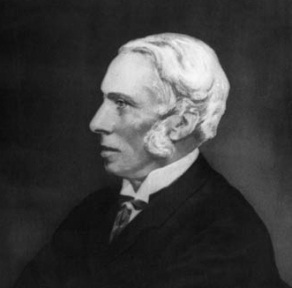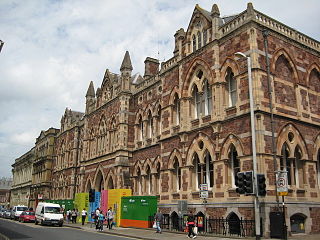Related Research Articles

Sir Edwin Landseer Lutyens was an English architect known for imaginatively adapting traditional architectural styles to the requirements of his era. He designed many English country houses, war memorials and public buildings. In his biography, the writer Christopher Hussey wrote, "In his lifetime (Lutyens) was widely held to be our greatest architect since Wren if not, as many maintained, his superior". The architectural historian Gavin Stamp described him as "surely the greatest British architect of the twentieth century".

Sir Nikolaus Bernhard Leon Pevsner was a German-British art historian and architectural historian best known for his monumental 46-volume series of county-by-county guides, The Buildings of England (1951–74).

Sir Denys Louis Lasdun, CH, CBE, RA was an eminent English architect, the son of Nathan Lasdun (1879–1920) and Julie. Probably his best known work is the Royal National Theatre, on London's South Bank of the Thames, which is a Grade II* listed building and one of the most notable examples of Brutalist design in the United Kingdom.

Linda Frances Elide Lusardi is an English actress, television presenter and former glamour model.

Richard Norman Shaw RA, also known as Norman Shaw, was a British architect who worked from the 1870s to the 1900s, known for his country houses and for commercial buildings. He is considered to be among the greatest of British architects; his influence on architectural style was strongest in the 1880s and 1890s.

Philip Speakman Webb was a British architect and designer sometimes called the Father of Arts and Crafts Architecture. His use of vernacular architecture demonstrated his commitment to "the art of common building." William Morris, Edward Burne-Jones and Dante Gabriel Rossetti were his business partners and her designed many notable buildings including one for Morris. He co-founded the Society for the Protection of Ancient Buildings.

Charles Alexander Jencks was an American cultural theorist, landscape designer, architectural historian, and co-founder of the Maggie’s Cancer Care Centres. He published over thirty books and became famous in the 1980s as a theorist of Postmodernism. Jencks devoted time to landform architecture, especially in Scotland. These landscapes include the Garden of Cosmic Speculation and earthworks at Jupiter Artland outside Edinburgh. His continuing project Crawick Multiverse, commissioned by the Duke of Buccleuch, opened in 2015 near Sanquhar.

Dennis Sharp was a British architect, professor, curator, historian, author and editor. His obituary in The Guardian stated that he 'was well-known as an architectural historian, teacher and active defender of the environment. However, his reputation in those fields rather overshadowed his considerable success as a working architect and his long-term commitment to environmentally friendly building'.

Architectural Design, also known as AD, is a UK-based architectural journal first launched in 1930 as Architectural Design and Construction. The journal is currently published by John Wiley & Sons, and has been edited by Helen Castle since 2001.
Walter Hindes Godfrey, CBE, FSA, FRIBA (1881–1961), was an English architect, antiquary, and architectural and topographical historian. He was also a landscape architect and designer, and an accomplished draftsman and illustrator. He was (1941–60) the first director and the inspiration behind the foundation of the National Buildings Record, the basis of today's Historic England Archive, and edited or contributed to numerous volumes of the Survey of London. He devised a system of Service Heraldry for recording service in the European War.
John Alfred Gotch was a noted English architect and architectural historian. His brother was the Pre-Raphaelite painter and illustrator Thomas Cooper Gotch, who painted his portrait. Married to Annie Gotch, one of their sons, Roby Myddleton Gotch was killed in action during the First World War aged 26.
Francis Reginald Stevens Yorke, known professionally as F. R. S. Yorke and informally as Kay or K, was an English architect and author.

Charles Henry Bourne Quennell (1872–1935), was an English architect, designer, illustrator and historian. According to the heritage architect Cath Layton, "his great influence [as an architect and urban planner] can be felt in the houses and streets of London’s suburbs and across the country." His obituary in Nature noted that his books for children and young people had "strongly stimulated interest in the cultural background of the more formal study of history".
Ivan Margolius is an author, architect and propagator of Czech culture and technology.

John Hayward (1807–1891) was a Gothic Revival architect based in Exeter, Devon, who gained the reputation as "the senior architect in the west of England".
Richard England is a Maltese architect, writer, artist and academic.
Thomas Raffles Davison ARIBA, usually credited as Raffles Davison or T. Raffles Davison, was an English architect, architectural illustrator and journalist of the late 19th and early 20th centuries. His work featured in The British Architect and Northern Engineer for over 40 years from 1874, and he became editor of the publication in 1878 until it merged with The Builder in 1919.
Studio Vista was a British publishing company founded in 1961 that specialised in leisure and design topics. In the 1960s, the firm published works by a number of authors that went on to be noted designers.

Arthur Edward Cogswell was an English architect, particularly active in the Portsmouth area. He was an architect who, although not well known nationally, left a strong mark on the appearance of Portsmouth lasting until this day.

Leonard Shuffrey (1852–1926) was a British architect and architectural designer of the late Victorian and Edwardian period. He was a leading figure of the aesthetic movement that had a significant impact on the development of buildings and their interiors and their settings, both across London and the South of England. Noted for his wallpaper, fireplaces and ornate plasterwork, Shuffrey was thought the equal of William Morris in his creativity and skill as a craftsman. His output is often found in decorative schemes with William Morris, Edward Ould, William De Morgan, and other preeminent Arts & Crafts and late Pre-Raphaelite decorative artists of the day.
References
- ↑ "Search Results for England & Wales Births 1837-2006 - findmypast.co.uk". Search.findmypast.co.uk. Retrieved 23 April 2018.
- ↑ Mallet, Victor (24 July 2008). "China must free the Olympic spirit". Business Spectator. Retrieved 12 October 2010.
- ↑ "About". Readingdesign.org. Retrieved 23 April 2018.
- ↑ "The Cosmic House". www.jencksfoundation.org. Retrieved 9 February 2023.